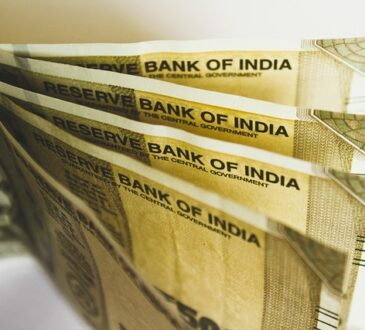Former World Bank Chief Economist Kaushik Basu analyzes the impact of US reciprocal tariffs on India, stating it will have a negative impact on both countries. He suggests India focus on expanding trade with other nations.
Basu further said that it is also not really a reciprocal tariff as the Trump administration calls it, it is based on the trade deficit the US has with India.
“The new US tariff of 26 per cent on India is baffling. While it will have some adverse impact on India, its major negative impact will be on the US,” he told PTI.
Basu, currently a Carl Marks Professor at Cornell University, said it is natural for a country like the US, which has a currency that is trusted and used worldwide, to have trade deficits.
“Hence, this new tariff policy looks almost like an effort to erode trust in the US dollar,” he added.
Basu also suggested that India should not respond by raising or lowering tariffs on US imports.
“India should do what Europe, Canada and China are doing, which is to try to expand trade among themselves.
“This is the time for new trade agreements,” the former Chief Economic Adviser said.
Responding to a question, he said the reciprocal tariffs on India will not have much effect on India’s inflation.
“In fact, its immediate impact may be dampening prices because the difficulty to export to the US will create some short-term glut in the Indian market,” Basu said.
According to him, if India responds by raising tariffs on US, as China has just done, that could cause the price of imported goods rise and this could infect the entire economy, resulting in inflation.
On whether India can turn this crisis into an opportunity, Basu said this can indeed be an opportunity for India, not immediately but eventually.
While noting that the immediate impact on India, as on most countries in the world, will be negative, he said the United States is the world’s most important economy, and this kind of policy mistake will send negative shock waves across the globe.
“No country will be immune to it. But, if the US persists with these policies and builds a tariff wall around its economy, its growth is bound to slow down,” he pointed out.
For other countries, Basu said, this will be an opportunity to expand trade with one another.
“Especially for big countries like India and China, this can give a boost to growth,” he said, adding that there will also be scope for expansion in trade between India and China.
He pointed out that India is already a global leader in the tech sector and pharma.
Last year, the World Economic Forum decided to set up a major centre for pharma, med tech and biotechnology in Hyderabad. This was wonderful news, he noted.
“Now, with the US retreating from the global space, these kinds of initiatives can be an important source of growth for India,” Basu said, adding that all this is for the long to medium run.
In the immediate run, Basu said the advice for India is to keep the seat belts on.
The US has revised downwards the import duties to be imposed on India from 27 per cent to 26 per cent, according to a White House document. These duties will come into force from April 9.
Announcing the reciprocal tariffs against different countries on Wednesday, US President Donald Trump held up a chart that showed the tariffs that countries like India, China, the UK, and the European Union will now have to pay.
The chart indicated that India charged 52 per cent tariffs, including currency manipulation and trade barriers, and America would now charge India a discounted reciprocal tariff of 26 per cent. Earlier, the White House documents showed a 27 per cent duty on India.
However, as per the latest updates, it has been revised downwards to 26 per cent. With America, India had a trade surplus (the difference between imports and exports) of USD 35.32 billion in goods in 2023-24.
This was USD 27.7 billion in 2022-23, USD 32.85 billion in 2021-22, USD 22.73 billion in 2020-21, and USD 17.26 billion in 2019-20.
In 2024, India’s main exports to the US included drug formulations and biologicals (USD 8.1 billion), telecom instruments (USD 6.5 billion), precious and semi-precious stones (USD 5.3 billion), petroleum products (USD 4.1 billion), gold and other precious metal jewellery (USD 3.2 billion), ready-made garments of cotton, including accessories (USD 2.8 billion), and products of iron and steel (USD 2.7 billion).
Imports included crude oil (USD 4.5 billion), petroleum products (USD 3.6 billion), coal, coke (USD 3.4 billion), cut and polished diamonds (USD 2.6 billion), electric machinery (USD 1.4 billion), aircraft, spacecraft and parts (USD 1.3 billion), and gold (USD 1.3 billion).




